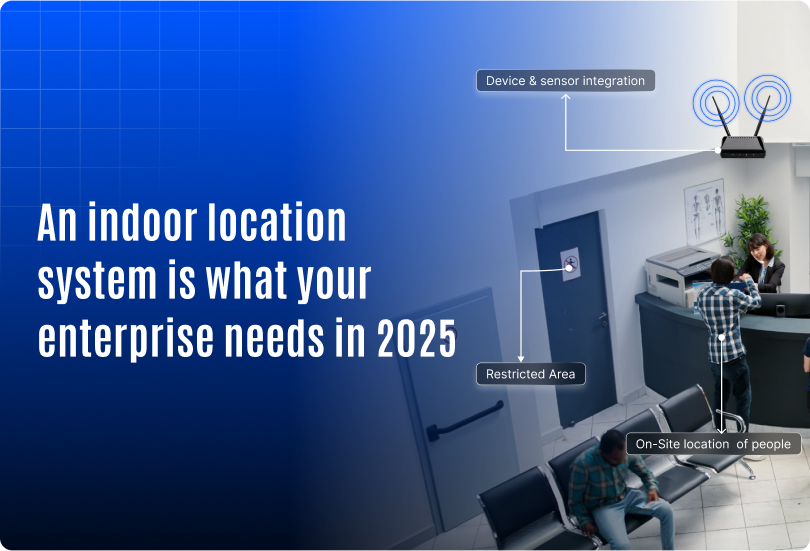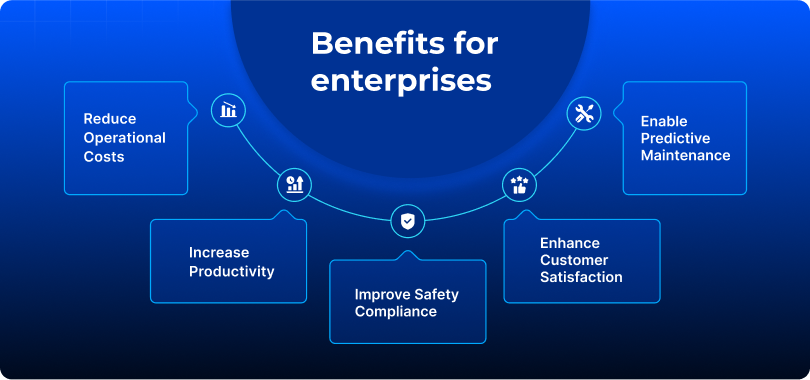Why Your Enterprise Needs an Indoor Location System in 2025

Global enterprises are losing millions each year due to misplaced assets, inefficient workflows, and poor visibility inside facilities. In manufacturing alone, downtime caused by unavailable equipment can cost up to $260,000 per hour. In healthcare, studies show that staff spend over 30% of their time searching for equipment, impacting both productivity and patient care.
An indoor location system changes this equation by delivering precise, real-time tracking in spaces where GPS fails. Using BLE, Wi-Fi, UWB, and sensors, it provides accuracy across warehouses, factories, hospitals, and large offices.This technology enables instant asset retrieval, optimized workforce deployment, and stronger safety compliance.
In 2025, with operational costs rising and competition intensifying, enterprises that implement indoor location systems. It will not just save time and money they’ll gain a measurable advantage in efficiency, safety, and decision-making.
What is an indoor location system?
An indoor location system is a tracking technology designed to monitor and manage the movement of assets, equipment, or people within enclosed spaces. It uses wireless signals and sensors to provide accurate location data in real time.
Core capabilities
- Tracks location with high accuracy.
- Supports asset and personnel movement monitoring.
- Works in GPS-denied environments like factories, warehouses, and hospitals.
- Integrates with enterprise management software for data insights.
Why enterprises need it in 2025
1. Enhanced operational efficiency
-
Monitor asset locations in real time.
-
Reduce time wasted in searching for misplaced tools or equipment.
-
Automate workflows by linking location data with operations.
2. Better asset utilization
-
Identify underused equipment and redeploy it where needed.
-
Prevent idle time by having precise location data.
-
Optimize space and resource allocation.
3. Increased safety and security
-
Set up geofences to restrict access to sensitive zones.
-
Trigger alerts when an asset or person enters or leaves a defined area.
-
Track emergency evacuations in real time.
4. Data-driven decision making
-
Analyze movement patterns to identify bottlenecks.
-
Improve floor layouts for better efficiency.
-
Plan staffing based on location and usage trends.
Key features to look for in an indoor location system
High accuracy tracking
Ensures reliable positioning within centimetres or meters, depending on your operational needs.
Real-time data updates
Delivers instant location insights to support quick decision-making.
Multi-technology support
Works with BLE beacons, Wi-Fi access points, and other IoT devices for flexibility.
Integration capability
Connects seamlessly with ERP, WMS, or fleet management platforms.
Scalability
Handles expansion from a single building to multiple facilities.
Industry applications
Manufacturing
- Monitor raw material movement on the shop floor.
- Track tools and equipment between workstations.
Healthcare
- Locate critical medical equipment instantly.
- Track patient movement for safety and efficiency.
Logistics and warehousing
- Manage inventory location in real time.
- Reduce loading and unloading delays.
Corporate offices
- Optimize meeting room and workspace usage.
- Enhance visitor management systems.
Steps to implement an indoor location system
- Assess needs – Identify areas where tracking can create value.
- Choose technology – Select BLE, Wi-Fi, or hybrid solutions.
- Plan integration – Connect with existing management systems.
- Deploy in phases – Start small, then scale up.
- Train staff – Ensure teams know how to use the system effectively.
Why now is the right time
The year 2025 brings a business landscape that is faster, more competitive, and more data-driven. Technologies like AI and IoT are integrating seamlessly with location systems, making them more powerful than ever. Enterprises adopting these solutions now will benefit from faster ROI, better efficiency, and a strong competitive edge.
Conclusion
An indoor location system is no longer a futuristic concept, it’s a must-have tool for enterprises aiming to stay competitive in 2025 and beyond. Whether it’s tracking assets and enhancing safety, this technology offers measurable benefits. If your business relies on the smooth movement of assets and people within large facilities, investing in this system could be the smartest move you make this year.




